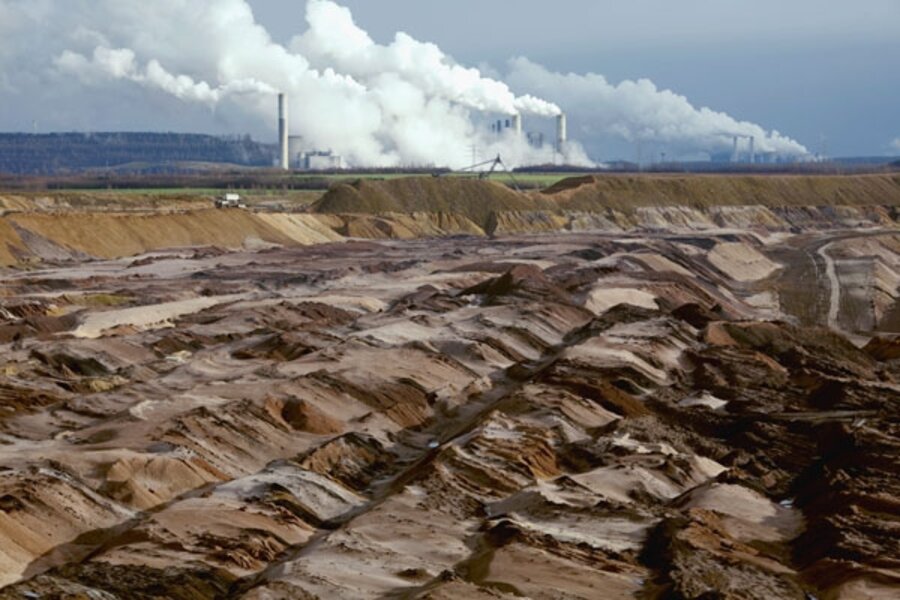Stop burning fossil fuels now to warm Earth later?
Loading...
One facet of the earth's climate doesn't often make it into discussions over human-induced climate change. And that is: Before people ever began burning fossil fuels, climate changed, so there's no reason to think that it won't change again. Unless, of course, Homo sapiens — or something else — somehow prevents that change from occurring.
(Quick note: Obviously, a vociferous contingent does cite the fact that climate has changed in the past, usually as evidence that humans can't be changing climate now, that it's out of our control. Absent a plausible explanation for how the former observation supports the latter conclusion, we're leaving those arguments aside.)
For about 2.58 million years before present, Earth's climate has swung back and forth between cold and warm states. Scientists call this period the Pleistocene — the age of woolly mammoths, woolly rhinos, and, during the past 200,000 years or so, a big-brained, tool-wielding hominid called Homo sapiens. (If 2.58 million years seems longer than you remember the Pleistocene being, that's because scientists recently revised its length, extending it more than 1 million years.)
During the cold phases of the Pleistocene, glaciers a mile thick in places covered much of North America and Europe. At their greatest extent, they covered some 30 percent of the earth's surface.
Scientists think that variations in Earth's orbit are responsible for these cold periods interspersed with warmer ones. Earth's orbit is not a perfect circle, and the angle at which it spins relative to its orbital plane changes as well.
Together, these (and other) shifts alter how much sun hits different regions of the earth during different seasons. If the poles cool — especially the North Pole — and enough ice accumulates, it can trigger an ice age. During the Pleistocene, ice ages occurred roughly on a 100,000 year cycle.
A study reported in the journal Science in September concluded that, as one might predict, the planet was due for another Ice Age sometimes soon. In fact, the arctic had been cooling for the past 2,000 years. But this cooling trend was reversed in the 20th century by anthropogenic greenhouse gases.
In other words, we'd inadvertently saved ourselves from advancing glaciers by burning fossil fuels.
A study published in Geophysical Research Letters this past February made this point explicitly. Gary Shaffer of the Niels Bohr Institute, University of Copenhagen, argued that fossil fuels were so valuable as a tool to modify future climate — to ward off future ice ages — that we should stop burning them now and keep them in reserve for that purpose.
We've released enough carbon dioxide to ward off an ice age for another 55,000 years, he said. And if we saved what remains for controlled release in the future, we could keep the our relatively balmy conditions going for another 500,000 years.
Another study last year in the journal Nature suggested yet another reason (besides avoiding sea level rise and ocean acidification, among other things) why this approach might be wise in the long term. The authors argued that oscillations between warm and cold during the Pleistocene actually represented a transition phase to a stable state that was much colder.
In other words, the next ice age could be permanent. As The New York Times' Andrew Revkin described it: "In essence ... the ice age cycles over the past million years are a super-slow-motion variant of the dramatic jostlings recorded by a seismograph in an earthquake before the ground settles into a new quiet state.">
Climate scientists weighed in on the paper in the Times' Dot Earth blog:
NASA'S James Hansen pointed out the obvious — that our problem was the opposite: "It would take only one CFC factory to avert any natural cooling tendency. Our problem is the opposite: we cannot seem to find a way to keep our GHG forcing at a level that assures a climate resembling that of the past 10,000 years."
MIT's Carl Wunsch questioned the scientific validity of the whole exercise: "If I make a four-box model of the world economy, and predict the US stock market level 500 years from now, who would pay any attention? Climate is far more complicated than the world economy, yet supposedly reputable journals are publishing papers that superficially look like science, but which are the sort of thing scientists will speculate about late at night over a few beers."
Editor’s note: For more articles about the environment, see the Monitor’s main environment page, which offers information on many environment topics. Also, check out our Bright Green blog archive and our RSS feed.





